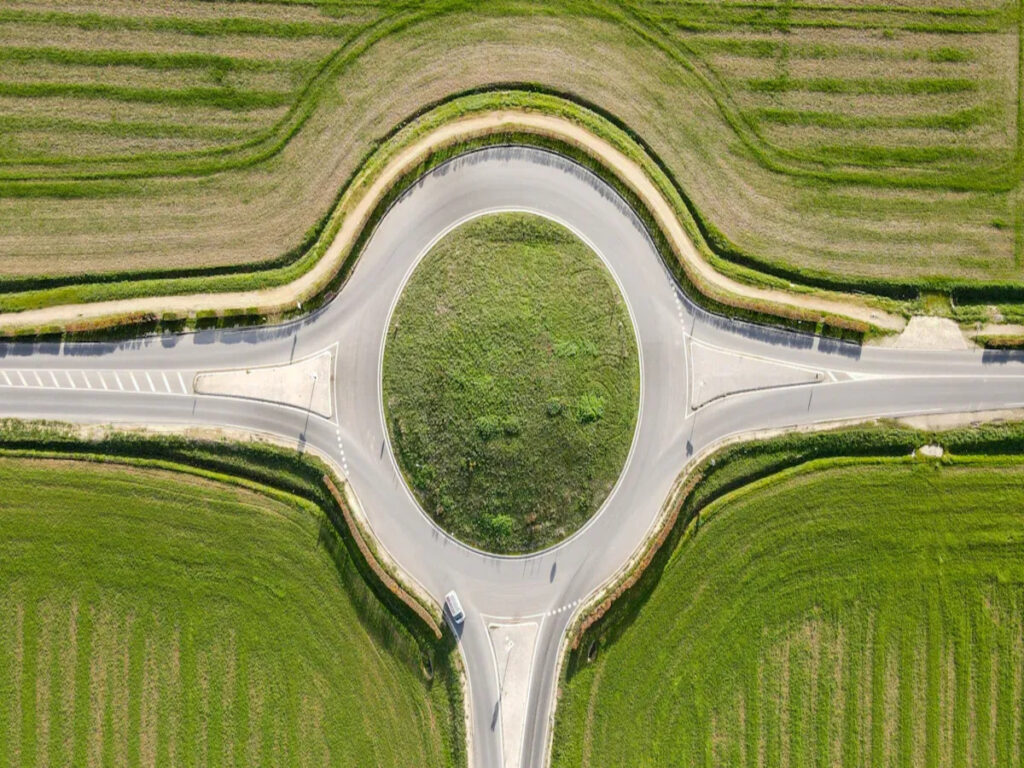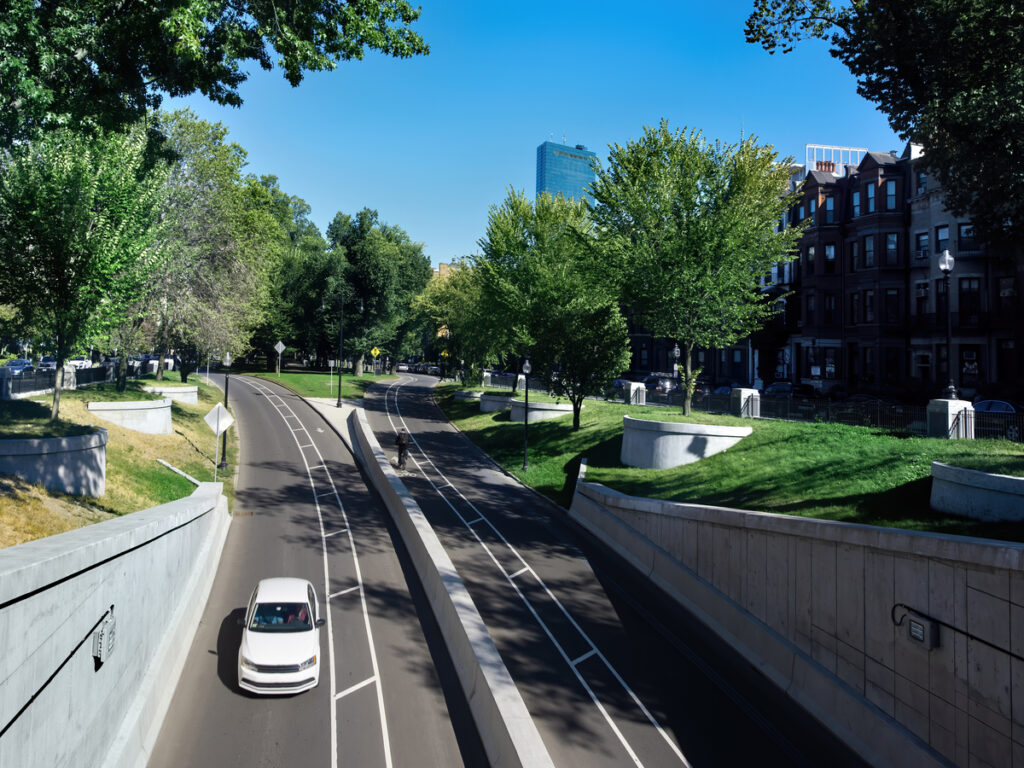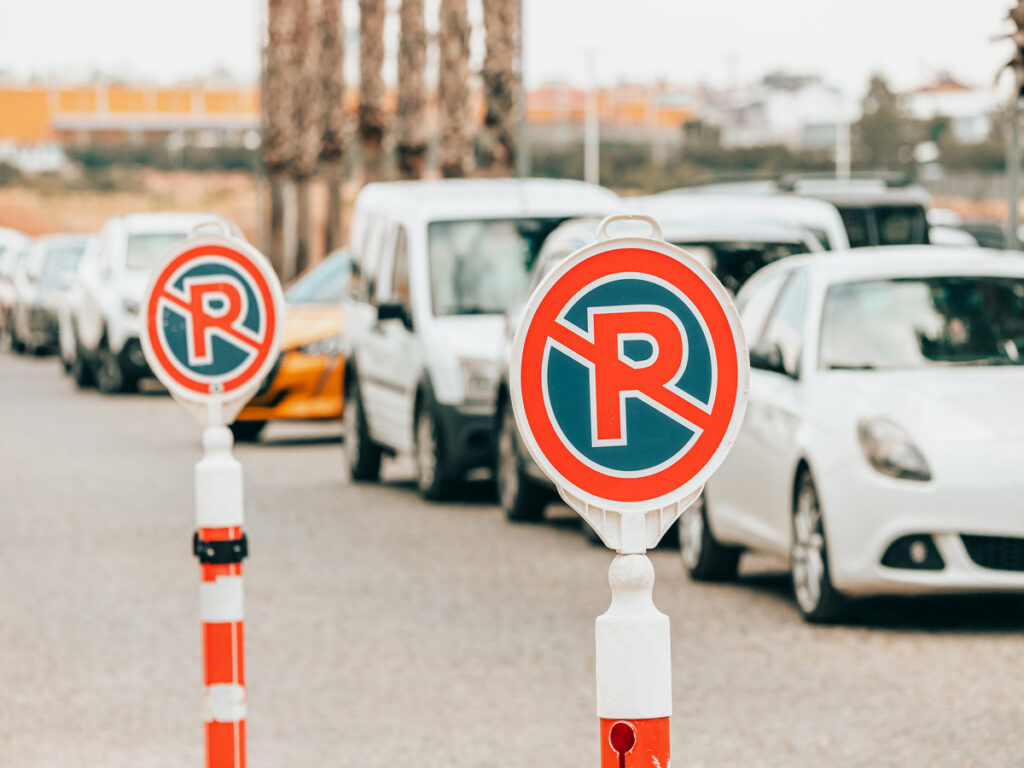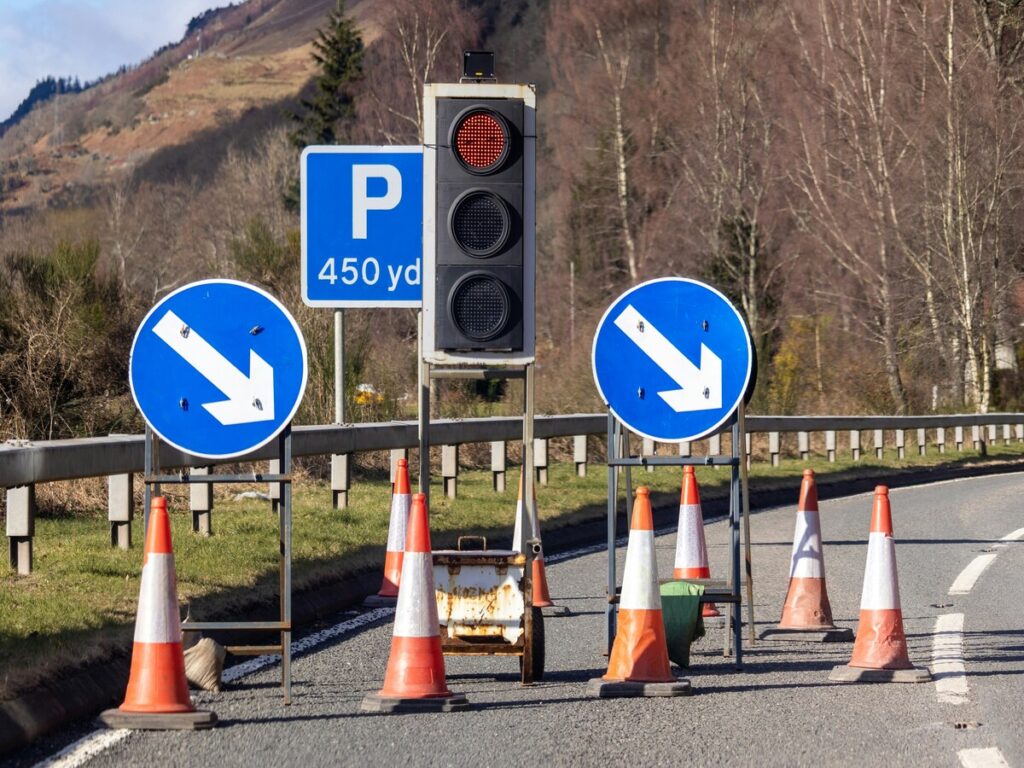
Sie wissen es vielleicht nicht, Aber Straßenbau verwendet schädliche Materialien. Zement machen, ein wichtiger Teil von Beton, Veröffentlicht viel Co₂. Straßen, Autobahnen, und Städte fügen jedes Jahr Millionen von Tonnen Kohlenstoff hinzu. Gleichzeitig, Menschen auf Straßen zu schützen, ist sehr wichtig. Verkehrssicherheitsprodukte wie Barrieren, Geschwindigkeitsstöße, und Posts helfen, Leben zu schützen. Aber diese Werkzeuge zu machen, kann auch die Umgebung schädigen.
CO₂ concrete is a smart new solution. It lowers carbon pollution while staying strong and long-lasting for safe roads. By using captured CO₂ in concrete, it helps create cleaner and greener transportation.
Key Takeaways
- CO₂ concrete cuts pollution by up to 75% während der Produktion.
- It makes roads safer with strong traffic safety products like barriers and bollards.
- Using recycled materials in CO₂ concrete reduces waste and saves resources.
- Smart Tech, like sensors in crash pads, boosts road safety.
- Government support can help spread CO₂ concrete for better roads.
Understanding CO₂ Concrete
How CO₂ mineralization works in making concrete
CO₂ mineralization turns captured carbon dioxide into solid material in concrete. Erste, CO₂ is collected from factories like cement plants. Dann, it reacts with calcium-rich substances to form stable carbonates. These carbonates mix into the concrete and trap the CO₂ forever.
New methods are improving this process. Zum Beispiel:
- Terra CO2 cuts CO₂ emissions by 70% using special materials.
- Fortera’s ReCarb captures CO₂ from exhaust and lowers emissions by 70%.
- C-Crete Technologies uses a binder without cement that absorbs CO₂ over time.
These techniques show how CO₂ mineralization reduces pollution and makes concrete production greener.
Vorteile: stark, dauerhaft, und umweltfreundlich
CO₂ concrete is stronger and lasts longer than regular concrete. Tests show it can handle 2.1 times more pressure and has fewer tiny holes. This makes it tougher against damage and weather.
It’s also better for the planet. CO₂ concrete uses up to 60% recycelte Materialien, Abfall reduzieren. It lowers CO₂ emissions by up to 75% during its life cycle. Plus, it absorbs CO₂ as it ages, making it even more eco-friendly.
Comparing CO₂ concrete to regular concrete
CO₂ concrete beats regular concrete in both strength and environmental impact. Regular concrete uses Portland cement, which causes 88% of CO₂ emissions during production. CO₂ concrete uses recycled materials and special additives to lower its carbon footprint.
Studies show adding materials like slag and fly ash to CO₂ concrete reduces emissions while keeping it strong. This proves CO₂ concrete is not only better for the environment but also performs well in construction.
Traffic Safety Products Made with CO₂ Concrete

Concrete barriers and Jersey barriers for crash resistance
Betonbarrieren, wie Jersey -Barrieren, keep people safe on roads. They stop cars from crossing into dangerous areas or traffic. CO₂ concrete barriers are just as strong as regular ones. But they are better for the environment because they lower carbon pollution.
These barriers are tough and handle hard crashes well. The CO₂ mineralization process makes them dense and strong. They work in tough conditions and help protect the planet.
Lustige Tatsache: CO₂ concrete barriers cut carbon by up to 75%. They are a smart choice for eco-friendly building projects.
Speed humps and bollards for urban traffic management
Poller Und Geschwindigkeitsschwellen help control traffic in busy areas. Speed humps slow cars in neighborhoods, Schulen, und Parkplätze. Traffic bollards guide cars and keep pedestrians safe.
CO₂ concrete makes these tools strong and long-lasting. Speed humps resist damage from constant car use. Bollards stay sturdy even after repeated hits.
These traffic safety products can be recycled when no longer needed. Recycling reduces waste and supports reusing materials. Choosing CO₂ concrete helps make streets safer and protects the environment.
Crash cushions and impact attenuators with smart sensor integration
Crash cushions and impact attenuators absorb crash energy to save lives. Made with CO₂ concrete, they are safe and eco-friendly. Their dense material also makes them easier to transport and use.
Some crash cushions now have smart sensors. These sensors track crashes and give data to improve safety. CO₂ concrete is perfect for these high-tech tools because it is strong and flexible.
Using smart technology with green materials helps create safer, cleaner roads for the future.
Environmental Benefits of CO₂ Concrete

Cutting carbon emissions during production
CO₂ concrete helps lower carbon pollution when it’s made. Regular cement releases a lot of CO₂, which harms the planet. By using materials like fly ash and limestone, CO₂ concrete reduces this damage. Studies show it cuts carbon emissions by 21.1% compared to regular cement. This makes it a better choice for roads and safety tools.
The CO₂ mineralization process traps carbon dioxide inside the concrete forever. This method not only lowers pollution but also keeps CO₂ from escaping back into the air. Choosing CO₂ concrete helps the environment and supports safer roads.
Using recycled materials to reduce waste
Recycled materials make CO₂ concrete more eco-friendly. They replace natural resources, cutting waste and saving materials. The benefits are clear:
- Making one ton of recycled cement releases only 0.0602 tons of CO₂.
- Regular cement releases 0.7398 tons of CO₂ per ton.
- Using recycled materials cuts emissions by 0.103 tons per ton.
- Fully recycled concrete can lower emissions by 0.507 tons per ton.
Durch Verwendung von recycelten Materialien, CO₂ concrete reduces waste and pollution. This helps protect the planet and saves resources for the future.
Supporting recycling and reducing waste
CO₂ concrete helps recycling and cuts down on construction waste. Studies show it can turn old building materials into useful resources. Zum Beispiel:
| Studie | Ergebnisse |
|---|---|
| Kaliyavaradhan and Ling | Found CO₂ concrete traps carbon and lowers emissions. |
| Corsten et al. | Recycling could cut 2.3 MtCO2-eq emissions yearly in the Netherlands. |
| Egypt Study | Recycling saves landfill space and lowers energy use. |
| Islam et al. | Recycling in Dhaka could save $45 million and cut emissions. |
CO₂ concrete can be reused when it’s no longer needed. This reduces waste and makes the most of materials. By choosing CO₂ concrete, you help create a future where we reuse instead of throw away.
Real-World Uses of CO₂ Concrete
Victoria, Australien: Traffic barriers made with CO₂ concrete
In Victoria, Australien, CO₂ concrete has shown great success. Der North Western Program Alliance used it to make traffic barriers. These barriers used 60% recycled materials instead of new ones. The project also tested large amounts of CO₂ concrete, which worked well in real conditions.
These traffic barriers are strong and crash-resistant like regular ones. But they release much less carbon, sie umweltfreundlich machen. They are perfect for highways, Arbeitszonen, and risky areas. Victoria’s use of CO₂ concrete sets a good example for safety and sustainability.
European cities: Testing in historic areas for safer streets
European cities are trying CO₂ concrete in old neighborhoods. These places need to protect their history while managing traffic. CO₂ concrete is a good fit. Cities have used it for kerbs, Wände, and safety tools to slow cars and protect people.
The tests have been successful. The material matches the look of historic areas and stays strong. It also helps the environment by cutting carbon emissions. If you visit these areas, you’ll see how it improves safety and looks.
UNS. research: Studying strength for traffic tools
In den USA, schools and companies are studying CO₂ concrete. They are testing how it holds up under heavy use. This is important for traffic safety products like road barriers and bollards. Early results show it works very well, Auch unter schwierigen Bedingungen.
This research shows CO₂ concrete can last a long time. Future projects will use this knowledge to build safer, grünere Straßen. Supporting this research helps improve construction and protect the planet.
Herausforderungen und zukünftige Chancen
Problems with cost and lack of awareness
Switching to CO₂ concrete has some problems. One big issue is cost. Es kostet zunächst mehr, even though it saves money later. Many projects focus on saving money right away. This slows down the use of eco-friendly materials. Another problem is that people don’t know much about CO₂ concrete. Decision-makers often choose old materials because they are used to them.
You can help fix this by spreading the word. Teach others about CO₂ concrete through workshops and examples. Show how strong, lang anhaltende, and eco-friendly it is. When people see its benefits, they will want to use it more.
Government help and green building rules
Governments can help make CO₂ concrete popular. They can offer tax breaks and rewards for using low-carbon materials. Green building rules can require public projects to use eco-friendly options. This creates more demand for CO₂ concrete.
| Beweis | Key Ideas |
|---|---|
| Cement sustainability policies | Shows how tax breaks and carbon rules help low-carbon materials. |
| Innovation incentives | Explains how green rules and carbon pricing push eco-friendly choices. |
| Public project rules | Suggests government rules can boost demand for low-carbon materials. |
By supporting these rules, you can help eco-friendly materials grow. This helps both the planet and the economy.
Future roads with green designs and smart tools
Roads of the future will mix green ideas with technology. Eco-friendly designs will cut pollution and make roads safer. Zum Beispiel, smart sensors can find accident-prone spots and stop crashes. Cities like Dubai and Doha already use green spaces and better transit to lower accidents.
In Kansas, a test program is trying smart pavement. These concrete pieces have tools that collect traffic data and charge electric cars wirelessly. These ideas make roads safer and cleaner. Imagine roads that save lives and help the planet. By supporting these ideas, you can help build smarter, grünere Straßen.
CO₂ concrete is both eco-friendly and safe for roads and traffic safety products. It cuts carbon pollution and makes strong, lasting road solutions. Using CO₂ concrete helps the planet and keeps people safe.
Leaders, Bauherren, and communities are key to making a difference. Support green building ideas and projects with CO₂ concrete. Zusammen, we can create roads that protect people and the Earth. 🌍
FAQ
Why is CO₂ concrete better for the environment?
CO₂ concrete locks in carbon dioxide during its creation. It uses recycled materials, which cuts waste and pollution. It reduces CO₂ emissions by up to 75% compared to regular concrete. Choosing it helps protect the Earth. 🌱
Can CO₂ concrete be used for all road safety tools?
Ja, CO₂ concrete works for barriers, Geschwindigkeitsstöße, Poller, and crash cushions. It is as strong and durable as regular concrete. It’s great for highways, Straßenstraßen, und Bauzonen.
How does CO₂ concrete make roads safer?
CO₂ concrete builds tough safety tools like barriers and crash cushions. These tools handle crashes and last a long time. Some even have smart sensors to track accidents. This makes roads safer with modern technology. 🚧
Is CO₂ concrete more expensive than regular concrete?
Anfangs, CO₂ concrete costs more because of how it’s made. But it lasts longer and needs less fixing, im Laufe der Zeit Geld sparen. It’s a smart choice for quality and the environment.
Can CO₂ concrete be reused after it’s no longer needed?
Ja, CO₂ concrete can be recycled into new materials. This lowers waste and supports reusing resources. By recycling it, you help create a cleaner, greener world. ♻️



















